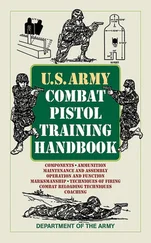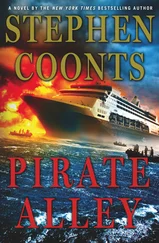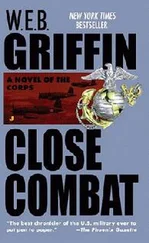“I don’t see how they can,” John Ormack said, smiling mischievously. “And we very well can’t fly a Megafortress into Honolulu, can we?”
“And in five hours, we can be back on patrol over the Strait of Hormuz,” Wendy Tork said. “We know what that Blackjack looks like on our sensors. We keep an eye on him and jump him if he tries to make another move.” Everyone on the crew was getting into it now.
“In the meantime, we get full authorization to conduct a search-and-destroy mission over the Strait of Hormuz for the mysterious Soviet-Iranian attack plane,” Patrick said. “If we don’t get it, we land back here at Diego, get ‘fixed,’ and return to Dreamland. We’ve done all we can do.”
“Sounds like a plan to me,” Brad Elliott said, beaming proudly and clasping Patrick on the shoulder. “Let’s work up a weapons list, get our guys busy loading gas and missiles, and let’s get this show on the road!” As they all got busy, Brad stepped over to Patrick, and said in a low voice, “Nice to be working together with you again, Muck.”
“Same here, Brad,” Patrick said. Finally, thankfully, the old connection between them was back. It was more than reestablishing crew connectivity — they were back to trusting and believing in one another again.
“Any idea how we’re going to find this mystery Iranian Megafortress?” Brad asked. “We’ve only got one chance, and we have no idea where this guy’s based, what his next target is, or even if he really exists.”
“He exists, all right,” Patrick said. He studied the intelligence reports Elliott had brought into the mission-planning room for a moment. “We must have a couple dozen ships down there protecting the Percheron.”
“I think the Navy’s going to move a carrier battle group to escort the cruiser back to Bahrain.”
“A carrier, huh?” Patrick remarked. “A cruiser is a good target, but a carrier would be a great target. Iraq made no secret of the fact they wanted to tag a carrier in the Gulf. Maybe Iran would like to claim that trophy.”
“Maybe — especially if they could pin the blame on Iraq,” Brad said. “But that still doesn’t solve our problem: How do we find this mystery attack plane? The chances of him and us being in the same sky at the same time is next to impossible.”
“I see only one way to flush him out,” Patrick said. “It’ll still be a one-in-a-thousand chance, but if he’s up flying, I think we can make him come to us.”
* * *
At over three hundred tons gross weight and with a wingspan longer than the Wright Brothers’ first flight, the Tupolev-160 long-range supersonic bomber, code-named “Blackjack” by the West, was the largest attack plane in the world. It carried more than its own empty weight in fuel and almost its own weight in weapons, and it was capable of delivering any weapon in the Soviet arsenal, from dumb bombs to multi-megaton gravity weapons and cruise missiles, with pinpoint precision. It could fly faster than the speed of sound up to sixty thousand feet, or at treetop level over any terrain, in any weather, day or night. Although only forty Blackjack bombers had been built, they represented the number one air-breathing military threat to the West.
But as deadly as the Tu-160 Blackjack was, there was one plane even deadlier: the Tupolev-160E. The stock Blackjack’s large steel and titanium vertical stabilizer had been replaced by a low, slender V-tail made of composite materials, stronger but more lightweight and radar-absorbing than steel. Much of the skin not exposed to high levels of heat in supersonic flight was composed of radar-absorbent material, and the huge engine air inlets for the four Kuznetsov NK-32 afterburning engines had been redesigned so the engines’ compressor blades wouldn’t reflect radar energy. Even the jet’s steeply raked cockpit windscreens had been specially shaped and coated to misdirect and absorb radar energy. All this helped to reduce the radar cross section of this giant bird to one-fourth of the stock aircraft’s size.
The only thing that spoiled the Blackjack-E’s sleek, stealthy needlelike appearance was a triangular fairing mounted under the forward bomb bay and a smaller fairing atop the fuselage that carried the aircraft’s phase-array air and surface search radars. The multimode radar electronically scanned both the sky and the sea for aircraft and ships, and passed the information both to allied ground, surface, and airborne units, as well as automatically programming its attack and defensive weapons.
The Blackjack-E and its weaponry were the latest in Soviet military technology — but that meant little to a starving, nearly bankrupt nation on the verge of total collapse. The weapon system was far more useful to the Soviet Union as a commodity — and they found a willing buyer in the Islamic Republic of Iran. Still oil-rich — and, with the rise in oil prices because of the war, growing richer by the day — but with a badly shavedback military following the devastating nine-year Iran-Iraq War, Iran needed to rebuild its arsenal quickly and effectively. Money was no object. The faster they could build an arsenal that could project power throughout the entire Middle East, the faster they could claim the title of the most powerful military force in the region, a force that had to be reckoned with in any dealings involving trade, commerce, land, religion, or legal rights in the Persian Gulf.
The Blackjack-E was the answer. The bomber was capable against air, ground, and surface targets; it was fast, it had the range to strike targets as far away as England without aerial refueling, and it carried a huge attack payload. After watching the Americans destroy nearly half of the vaunted Iraqi army with precision-guided weapons, the Iranians were positive they had spent their money wisely — any warplane they invested in had to be stealthy, had to be fast, had to have all-weather capability, and had to have precision-guided attack capability, or it was virtually useless over today’s high-tech battlefield. The Russians were selling — not just the planes, but the weapons, the support equipment, and Russian instructors and technicians — and the Iranians were eagerly buying.
The USS Percheron was the first operational test of the new attack platform. A large American warship, transiting the shallow, congested, narrow waters of the Strait of Hormuz alone, was an inviting target. The Percheron was a good test case because its long-range sensors and defensive armament were highly capable, some of the best in the world against all kinds of air, surface, and subsurface threats. If the Blackjack-E could penetrate the Percheron ’s defenses, it was indeed a formidable weapon.
The test was a rousing success. The Blackjack-E’s crew — an Iranian pilot as aircraft commander, a Russian instructor pilot in the copilot’s seat, two Iranian officers as bombardier and defensive-systems officer, and one Russian systems instructor in a jump seat between the Iranian systems officers — launched their entire warload of six Kh-29 external missiles — painted and modified with Iraqi Air Force markings — from maximum range and medium altitude. The missiles dived to sea-skimming altitude, then popped up to five hundred meters when only five kilometers from their targets and then dived straight down at their target. Two of the missiles missed the cruiser by less than a half a kilometer; two made direct hits. The explosions could be seen and heard by observers twenty kilometers away. Although the Percheron was still able to get under way, it was certainly out of action.
This time, however, the Blackjack-E would have a full weapons load. This would be the ultimate test. On this flight, the Blackjack-E was loaded for a multirole hunter-killer mission. In the aft bomb bay, it carried a rotary launcher with twelve Kh-15 solid-rocket attack missiles. Each missile had a top speed of Mach 5—five times the speed of sound — a range of almost ninety miles when launched from high altitude, and a three-hundred-and-fifty-pound high-explosive warhead. The missiles, covered with a rubbery skin that burned off while in flight, were targeted by the Blackjack’s navigator by radar, or they would automatically attack large ships using its onboard radar, or home in on preprogrammed enemy radar emissions. Designed to destroy target defenses and attack targets well beyond surface-to-air missile range, the Kh-15s were unjammable, almost invisible to radar, and almost impossible to intercept or shoot down.
Читать дальше












